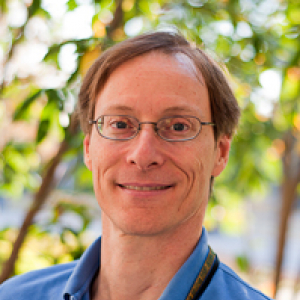
H Peter Spielmann, PhD
Connect
859-257-4790hps@uky.edu
Positions
- Professor
College Unit(s)
Other Affiliation(s)
- Toxicology - Joint Faculty
Biography and Education
Education
B.S., University of California, Los Angeles, 1984 Ph.D., University of California, Berkeley, 1991 Post-doctoral Fellow, University of California, Berkeley, 1991-95 NIH Post-doctoral Fellow, 1992-94
Research
The central theme of our research is understanding and describing the specific interactions and structural parameters that govern recognition between molecules.
Nucleic Acids: Our main research effort is focused on understanding the dynamics and conformational differences between damaged and undamaged DNAs, and their interactions with repair proteins. The primary tools that are employed in these studies are nuclear magnetic resonance spectroscopy (NMR) and synthetic organic chemistry. We have observed evidence for altered helix dynamics in response to photo-alkylation of DNA by the mutagen psoralen. The results of these studies should help clarify the relationship between DNA damage, DNA repair and carcinogenesis. We are continuing to develop techniques to incorporate dynamic information from NMR into the structure determination of nucleic acid solution conformations. Data of this kind will enable the community to deduce DNA structures more accurately from spectroscopic data, and to understand the limitations of those structures better. Many protein components of DNA repair systems in both prokaryotes and eukaryotes have been identified and are ripe for biophysical investigation.
My group also focuses on understanding the molecular interactions that govern molecular recognition of ligand-nucleic acid and ligand-protein systems. Synthetic, enzymatic and NMR studies of ligand-macromolecule complexes yield structural information that allows identification of some of the intermolecular features that are involved in specific molecular recognition processes. DNA and RNA are logical targets for the rational structure based development of therapeutic agents because of their central role in metabolism. Small molecule ligand-DNA systems can be synthesized with reasonable ease and are spectroscopically tractable. The many different kinds of binding modes exhibited by molecules with DNA makes it possible to decompose the interactions into various simpler components.
Isoprenylation: The superfamily of GTP-binding proteins are involved in the regulation of cellular receptor mediated signaling pathways. These small G-proteins are regulated by both post-translational modifications and interactions with a number of regulatory proteins. Post-translational modification by isoprenylation involves the covalent attachment of either a 15-carbon farnesyl or 20-carbon geranylgeranyl group to COOH-terminal cysteines and is crucial for the biological activity of these proteins. The post-translational isoprenylation of proteins requires multiple steps of substrate recognition. We are working with Professor Doug Andres' group to synthesize and evaluate new heterobifunctional photo-affinity probes to study the biochemistry of protein isoprenylation in eukaryotic cells.
Fullerenes: Working with Professor Mark Meier's group, we are developing methodology for the selective functionalization of fullerenes. In particular, we are interested in the functionalization of fullerene derivatives through chemical modification of hydrogenated fullerenes. The central focus of our efforts is understanding of how the initial addition reaction directs the reactivity of the remaining C=C bonds in the molecule. The application of NMR methods has been critical for obtaining definitive structural proof of these new materials.
PCB's: In Conjuction with Professor Larry Robertson's group, we are investigationg the chemistry of metabolically activated polychlorinatedbiphenys (PCB). We are particularly interested in the potential formation of DNA adducts by these compounds.
Selected publications
Research problems for undergraduate (BCH/CHE 395) and graduate students.
- Structure and dynamics of nucleic acids.
- Synthesis of novel heterobifunctional photoprobes.
- The mechanism of action of protein isoprenylation.
- The chemistry and structure of fullerenes (C60, C61, C70 C84 etc.).
- NMR spectroscopy in structural biology.